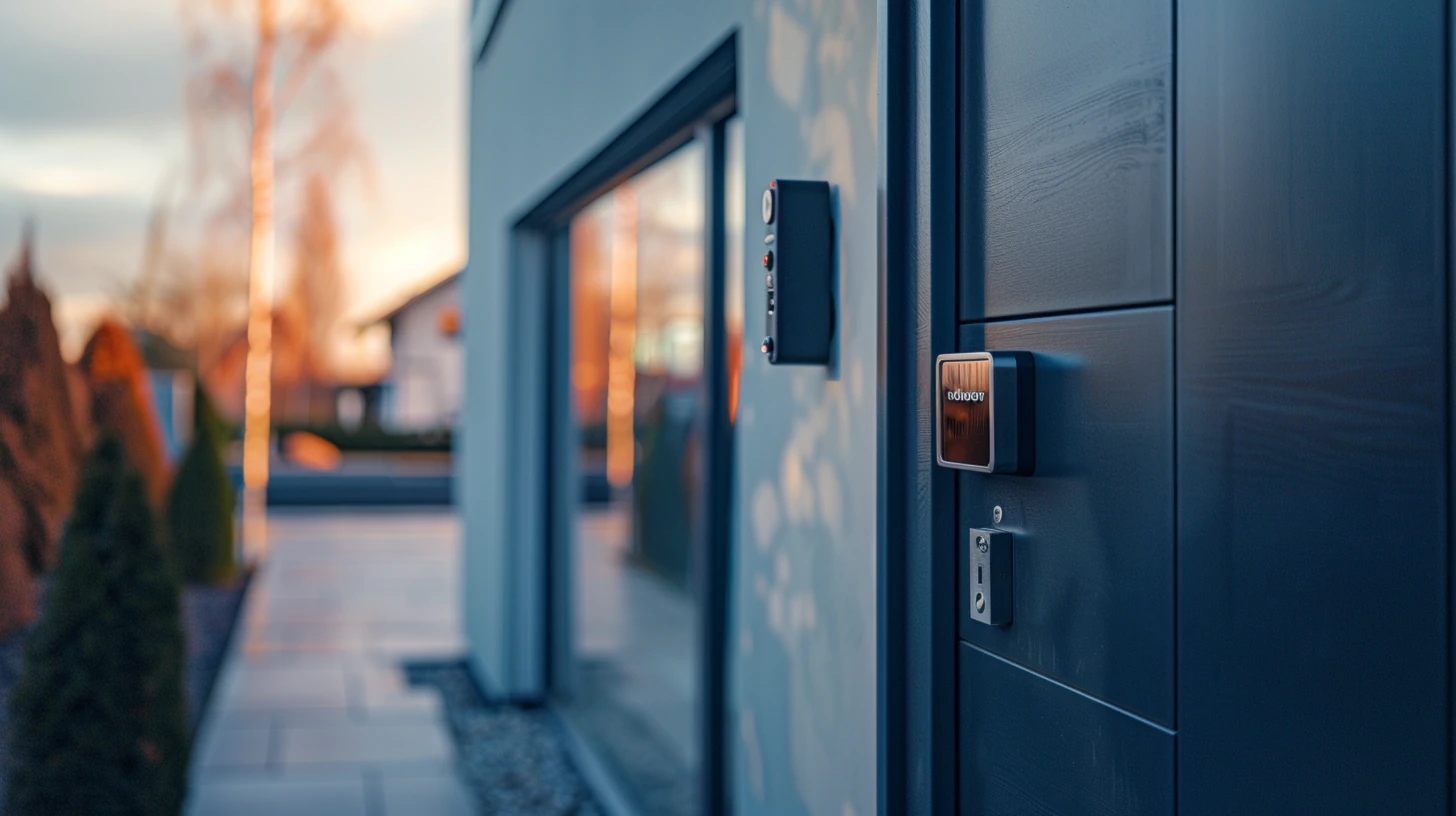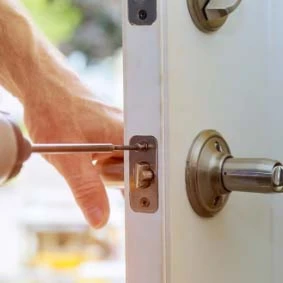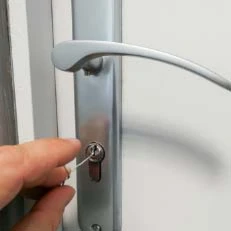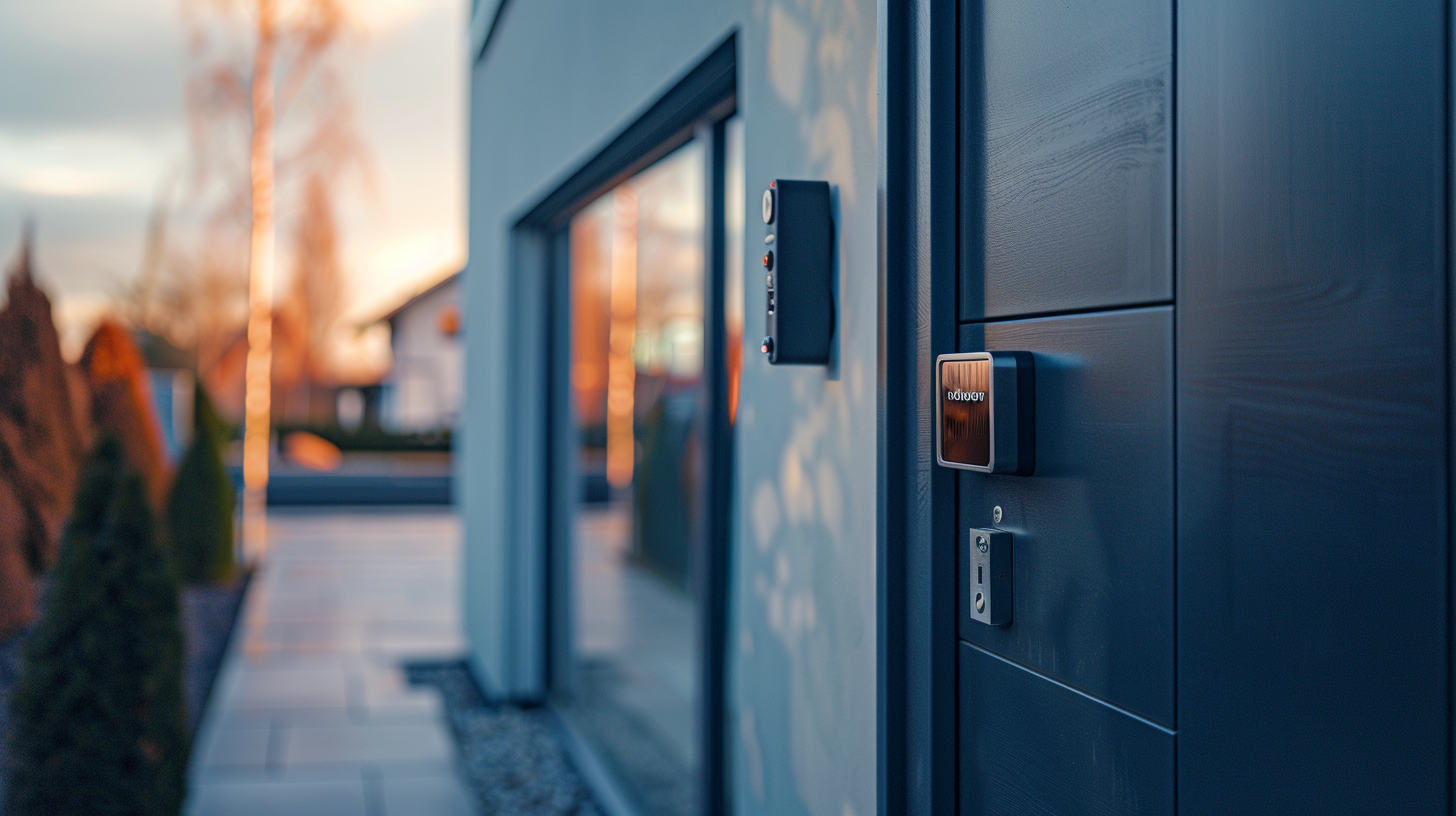Types Of Door Locks
What Are the Types of Door Locks?

Burglaries are one of the most common crimes. To protect your home, you should take care of the reliability of the entrance structure. Therefore, when you buy a door, the first thing you need to understand what kind of lock you want to install in it. Our team of professionals will help you to make the right choice. We will describe what types of locks there are at the entrance doors and how each of the listed modifications works.
Locks for doors differ in size, internal design, locking principle, way of insertion into the canvas, but most importantly – reliability, which is the key criterion for choosing a lock. After all, even the strongest door does not guarantee complete safety at home.
Door Lock Parts
First, you need to understand what the lock consists of. It has three main components:
- The Cylinder is a part of the lock that can be turned in the body only when a certain key is inserted into the hole inside the cylinder. This is the structure that moves the deadbolt. It is on him that the security and operation of the door lock depend.
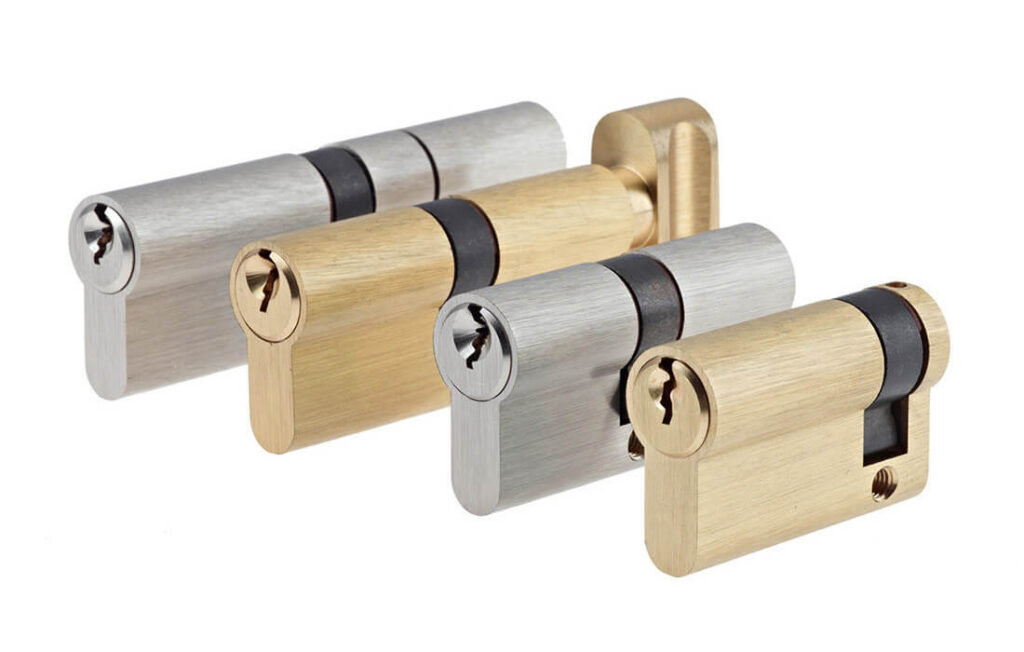
- The Bolt is a part of the lock in the form of a cylindrical or rectangular thick metal rod. When the curtain is closed, it slides out of the locking device on the door and is fixed in support on the wall. An important indicator is the overhang of the deadbolt. This is the distance between the side of the pin and the body of the lock.
The bolt is also called an element of an interior double door that fixes the door panel.
The deadbolt closing devices are reliable and burglar-proof.

- The Strike Plate is a metal part of the lock hardware with one or more holes that makes it easier for the bolt to pass through the hole in the door frame to keep the door closed.

Types of locks
By Installation Method:
- Padlocks

Padlocks are the most recognizable types of locks as they are one of the first type of locks that were invented many centuries ago. The locking mechanism with the help of a bow snaps into place on the brackets, the immobility of which must be fixed. At the same time, padlocks are easily burglarized - with the help of brute force, you can either break the mechanism or tear off the hinges.
Burglary resistance of padlocks implies resistance to picking, drilling, biting and twisting of the shackle, sawing the shackle loops, impact on the body of the padlocks. The weakest overhead locks are aluminum. Brass ones live a little longer (in critical situations, of course). Cast iron specimens withstand brute force well, but in severe frost, they become very fragile. Therefore, a steel case padlock is best suited to withstand the above-mentioned dangers.
Miniature padlocks are used for mailboxes, suitcases, bicycles. Medium or large padlocks are designed to close sheds, garages, gates, fences, gratings, technical and storage rooms, utility rooms (closets, attics, storerooms). That is, they are installed where it is not possible to install mortise or overhead due to inaccurate door mechanics and the lack of a profile structure.
- Rim Locks

Rim lock is a locking device that is mounted on the outer surface of the door and does not require complex installation work. Depending on the degree of protection, rim locks can be installed on metal or wooden, interior or entrance doors. The lock mechanism itself is always installed from the inside, on a fastening plate previously welded or fixed to the door material in another way.
Modern industry produces many types of locking devices. You can always find and buy a patch lock that will ideally fit the interior of your home. The lock housing can be one-sided or two-sided. One-sided locks can be locked with a key from the outside. A special handle is used to lock them from the inside. The two-sided device can be locked with a key on both sides.
- Mortise Locks

Compared with the previous versions, this lock is reliable and aesthetic. The mortise lock is inserted into the door panel in a way that only the keyhole is visible from the outside. Reliability is no different from the invoice. A mortise lock on interior doors looks neater than a regular barrel bolt, and on an entrance metal door it serves as a good protection. This type of lock was prevalent mainly in the 18th century, and fell out of use in the mid-20th century. But now many antique enthusiasts in Europe, the US and the UK are again favouring these stylish locks.
By Function:
- Locking
This lock is separate from the handle and includes only two positions - the door is closed, or the door is open, and is not fixed by anything, that is, it moves from any draft. It is better to use this lock as the second option, and make the first lock with fixation - it will be more convenient. However, it is also possible to have only locking locks and a conventional fixed door handle.
- Locking and Fixing
This type of lock comes complete with a door handle and locks the door with a key, and fixes - latches. The door is locked in place by slamming the latch bolt, which is pushed back by pressing the handle. It is a very convenient option.
By Locking Mechanism
- Cylinder locks

Cylinder locks, invented at the end of the 19th century, are today, along with the lever type locks, one of the most popular. Their popularity is explained, firstly, by the small size of the key, and, secondly, by the design features of the structure, which consists of two main parts: the cylinder mechanism and the actuator. Cylinder locks can be both mortise and rim. They are used on almost all types of doors.
The security of the lock is ensured by the cylinder mechanism, which in its fundamental structure practically does not differ from the device of the lever lock. Spring-loaded pins installed in the cylinder body block the movement of the cylinder. Pins are divided into code and locking pins. The locking pins block the cylinder, and the code pins, in turn, interact with the cutouts on the key and provide security. When the key is inserted into the cylinder, the cutouts on the key line up the pins in height to the desired position, as a result of which the mechanism is unlocked and it becomes possible to turn the cylinder. Together with the cylinder, the part attached to it rotates, which actuates the actuator that extends or retracts the crossbars.
Cylinder mechanisms are usually divided into one-sided and two-sided. One-sided mechanisms are unlocked / locked with a key only from the outside of the door, from the inside on the cylinder fixed knob (handles rotate) resulting in the movement mechanism. Double-sided cylinder mechanisms have a wrench hole on both sides.
In addition, according to the number in the lock cylinder itself, the pins can be located in one, two, three or four rows.
Among the weaknesses of cylinder locks is heir low resistance to rough mechanical breaking. Indeed, it is enough to drill, knock out or pull the cylinder out of the lock, as the access to the actuator opens. Manufacturers try to prevent this by using, for example, cylinder liners that make drilling or knocking out difficult. In addition, strong pins, plates or balls of hardened steel are often installed in the cylinder itself, which prevent drilling.
- Deadbolt Locks

Deadbolt lock for door is the most reliable locking mechanism. Its design is quite simple, it is used as a locking device for an apartment, and for garages, and even for a metal cabinet. It is easy to install, care for, and repair if necessary.
The deadbolt is a locking device in the form of a metal rod that extends from the lock and goes into the door frame. Usually in one lock there are from 3 to 5 bolts. The design of the bolt lock is based on just such rods. With the turn of the key, the bolt moves between other parts and is fixed in the position.
These mechanisms were previously used only to protect safes, but now, due to the increased demand for the production of more reliable mechanisms, they are used both for ordinary entrance doors and for auxiliary doors and garages.
Although these locks have a strong metal structure, they are not able to block the path even for a novice thief. The deadbolt lock belongs to the first class of security, that is, to less reliable devices. Such locks should not be used in places where expensive equipment and other valuables are stored, as an entrance one. But at the same time, they function excellent as additional locks.
With the improvement of technology, even such not the most reliable lock was improved - his security class was increased. Manufacturers produce devices that have additional protection stages. The handle in them can rise to a certain angle, and the mechanism is locked with a key.
- Knob Locks

These are handles that are round in shape and have a locking mechanism. They are usually used for interior doors inside the house and office doors. There are three types of knob locks:
- Without fixing the latch (the door can be opened from both sides);
- Locking on the inside (the lock can be locked using the rotary handle located on the inside of the door);
- With locking function (keyed lock mechanism is used).
Lever Handle Locks

This type of door locks is similar to knobs and also has a locking mechanism and is used for interior doors. The difference of this lock is that to open it, it is enough to lower the handle down.
They are especially convenient for people with disabilities and can be purchased in both right and left versions. Some lever handle locks can be forcibly opened under pressure, however, many manufacturers counteract this with a special mechanism that prevents pressure damage to the lock structure.
It is better not to use knobs and levers as the main locking mechanism for the front door, as these types of locks are not reliable and do not guarantee the safety of your home. To increase the security of your home, our experts recommend installing a locking system consisting of several locks.
Barrel Bolt

Barrel bolt is a type of hardware that is used to fix a window or door sash in an open or closed position. The scope of application of such bolts is very large: cabinet doors, wardrobes, windows, doors, gates, etc.
The bolt works in the following way: the bolt, locking pin, is pushed out of the body, enters into the strike plate, blocking the sash of a door, cabinet or window. To unlock the sash, you need to return the bolt to the opposite position. If the lever is left protruding, it will prevent the door or window from closing tightly.
According to the principle of operation, the barrel bolt can be:
- Mechanical. The bolt is pushed out manually, there is a rotary handle that helps to open or close the bolt, as well as fix it in this position.
- Automatic. Usually spring-loaded, with a locking button. When the door or window sash is slammed, the deadbolt automatically extends, and opens only when the button is pressed. They are often called furniture.
Chain Locks

One of the simplest, inexpensive and at the same time effective protective mechanisms is deservedly considered a chain on the front door. Despite the presence of a wide variety of devices and parts that increase the level of achieved safety, this small device is still used almost everywhere. As a matter of fact, no analogs to the chain for the door on the combination of "low price - high efficiency" have been invented yet.
Types of door chains used today
Currently, in the manufacture of metal entrance structures, two types of door chains are most actively used. The first of them is considered traditional and consists of two overlays, one of which is attached to the sash, and the other is fixed to the frame. They are quite naturally connected using the door chain directly.
At its end there is a ball or a special hook, which is easily but very securely fixed in a special groove. Such a chain for a metal door can be installed on any type of entrance structure, opening both outward and inward. This makes it a truly versatile product that is in demand in today's market.
The second type of devices under consideration is called a loop chain for an entrance metal door. It applies only to those structures that open inward. At the same time, a higher level of reliability and strength is an important advantage of products of this type. In fact, in this case, the analogue of the chain is a special metal loop, which is attached to the bracket.
Benefits of using chains
The answer to the question why the installation of a chain on the front door is still popular, despite the presence of many other protective devices, lies in the unique combination of advantages that are provided to the home owner by performing this type of work. These include:
- affordable price of a product manufactured by a large number of manufactures specializing in the production of door hardware;
- simplicity of its design, which at the same time provides an increase in the security of the house;
- undemanding maintenance, since the door chain practically does not need any maintenance, except for elementary wiping from dirt and dust;
- the presence of a large number of models of protective devices, which not only help to achieve the required level of safety, but also act as a decorative design element of the entrance structure.
Electronic locks

In our age of electronics, electronic locks have also gained popularity. Opened with a key fob, card or by a code. It has a lot of advantages such as lack of a keyhole and hidden location. However, there are some vulnerabilities here: such a lock must provide security even with a complete power outage. In addition, many are afraid to trust electronic locks, believing that it can fail more likely than conventional locks.
Today, you can open the door not only with a simple key, but also with a card, key fob, bracelet and any accessory where the chip is mounted, all these devices can be called electronic keys that are used almost everywhere.
Electronic locks are distinguished by their miniature size, remote control and programming. They can even operate on standard batteries. Thanks to the use of high-quality batteries, one set will last for an average of thirty thousand cycles.
Hotels were the first to use this kind of device, but now electronic locks have become more affordable, they are also used in homes.
Types of electronic locks
There are several more varieties of this kind of locking devices:
Mechanical electronic lock, opening in the following ways: electric drive, secret code, electronic keys. This type of locking device is installed on entrances and gates.

Combined – the most popular, which can be opened with a card and keys. The combined type of the lock is very reliable, since if an unsuccessful attempt to open the first lock, the rest will also fail to open due to the fact that they are connected by a chain.
Code lock. Most often, this type of locks are installed on the porches and it consists of a locking device and a panel. It is almost impossible to guess the password, but it is better to change the code several times a year so that crackers cannot guess by the erased buttons.
Biometric, which uses a fingerprint. This lock cannot be opened by third parties, moreover, you no longer need to carry bulky keys and remember difficult passwords.

Another innovation in the security system is an invisible lock, which is invisible to others, and it is possible to detect it only with the help of devices. It does not have an interface or a well, but it can be opened remotely.
The price range for this kind of locks can be very different, because it depends primarily on the functionality of the locking device.
Smart Locks

A smart door lock is a device that allows you to lock doors without using keys, remotely. Thanks to this, they can be used as a constituent element of a smart home system. We consider the principle of their work, advantages, the best models on the modern smart device market.
Smart locks are installed on both entrance and interior doors. They can be used as a stand-alone locking device or work in conjunction with standard locks unlocked with conventional keys. Their main feature is the ability to remotely control them using various devices - smartphones, tablets, central hubs.
To control the lock using the Internet, it connects to the central hub of the smart home or directly to the owner's smartphone or computer. For this, a wireless Bluetooth or WiFi connection is used. In this case, a special application must be installed on the mobile device, supported by the corresponding platform - iOs Windows, Android. After connecting the smart lock to the remote control device, you can give it commands, as well as receive various information:
- Are the doors open or closed at the moment
- Notifications if someone tries to enter
- When combining the device with a video surveillance camera, it is possible to receive an image on a smartphone, and decide whether to give the lock the command to unlock the door, or not.
